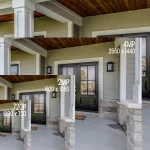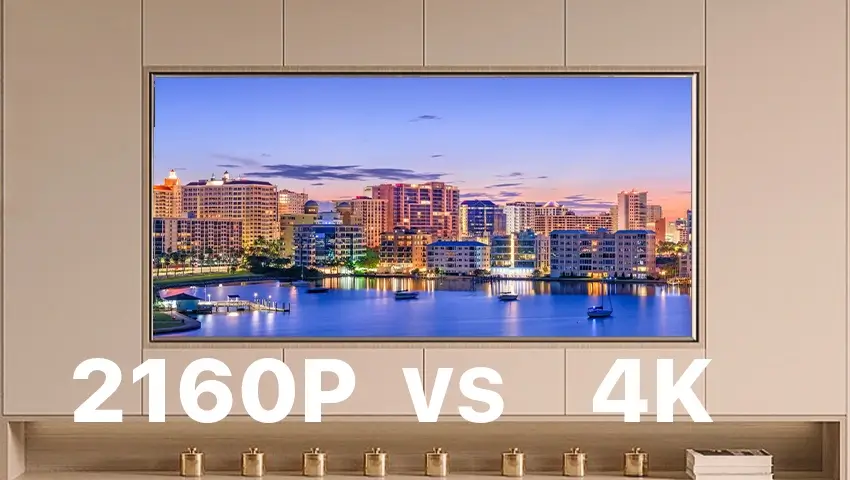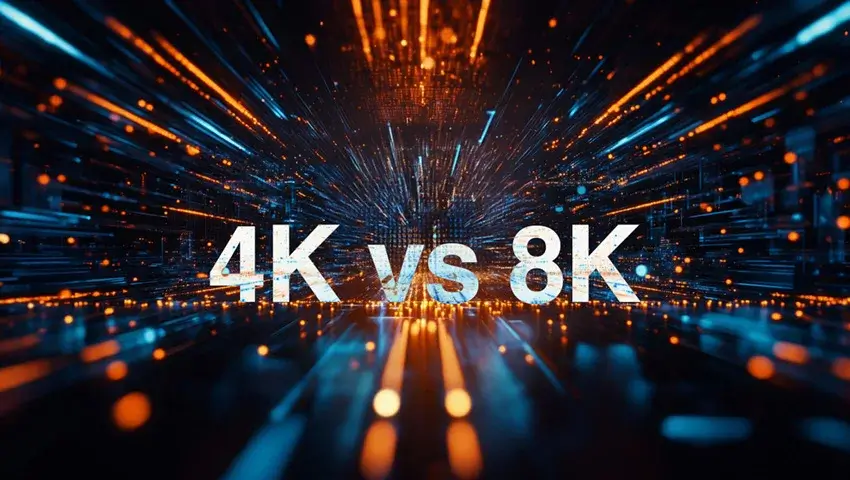In the realm of digital imaging, the choice between 4K and 1440p camera resolutions is more than just a numbers game. It’s about capturing the perfect balance of detail, performance, and practicality. As technology continues to push the boundaries of what’s possible, photographers, videographers, and enthusiasts alike are faced with an important question: should you go for the pixel-packed power of 4K, or is the still-impressive 1440p the better choice? In this blog post, we’ll unpack the technicalities, explore the real-world applications, and help you make an informed decision.
Contents
The Technical Lowdown:
At the heart of the 4K vs 1440p debate is the pixel count. Pixels are the building blocks of digital images, and the more you have, the more detailed your image can be. Let’s break it down:
1440p Resolution: Also known as Quad HD (QHD), this resolution offers a pixel count of 2560×1440, which equates to approximately 3.7 million pixels. It’s a significant step up from Full HD (1080p) and offers a substantial increase in image detail and clarity.
4K Resolution: Often referred to as Ultra HD (UHD), 4K takes resolution to new heights with 3840×2160 pixels, resulting in a whopping 8.3 million pixels. This means that 4K cameras can capture more than twice the pixel count of 1440p, leading to images that are incredibly sharp and detailed.
Visual Impact:
The difference in pixel count doesn’t just show up in numbers; it translates to a noticeable difference in the visual quality of your content. Let’s delve into the impact this has:
Detail and Clarity: With over twice the pixels, 4K cameras can capture finer details and produce images with smoother gradients and less aliasing. This is particularly noticeable when zooming in or when the image is viewed at a larger size.
Side-by-Side Comparison: To truly appreciate the difference, look at side-by-side comparisons of photos and videos shot in 4K and 1440p. The 4K content will have a certain pop and vibrancy that is hard to achieve with 1440p.
Performance Considerations:
When it comes to camera performance, refresh rate is a critical factor to consider:
Refresh Rates: The refresh rate, measured in Hertz (Hz), is the number of times a display can update the image on the screen per second. Higher refresh rates lead to smoother motion and reduced motion blur, which is crucial for video and gaming. While 4K cameras often top out at 144Hz, 1440p cameras can offer refresh rates of up to 240Hz or more, providing a significant advantage for fast-paced content.
Practical Applications:
The choice between 4K and 1440p goes beyond just specs; it’s about how these resolutions perform in real-world scenarios:
Photography: In photography, the extra pixels that 4K offers can be a boon for detail-oriented shots. Whether you’re capturing landscapes with intricate textures or portraits with fine facial details, 4K gives you the flexibility to crop and zoom without losing image quality.
Video Production: For video production, 4K’s high resolution is a double-edged sword. On one hand, it allows for detailed close-ups and crisp imagery. On the other hand, it demands more from your editing software and hardware. 1440p offers a happy medium, providing high-quality results without the same level of strain on your system.
Gaming: Gamers often find that 1440p strikes a balance between performance and visual fidelity. With a capable GPU, a 1440p monitor can deliver high frame rates with the added benefit of increased detail over 1080p.
Upscaling and Downscaling:
One of the arguments for choosing a 4K camera is the ability to downscale to 1080p for sharper images or to 1440p for a performance boost. Conversely, 1440p content can be upscaled to 4K, but with mixed results:
Upscaling: Modern cameras and displays use sophisticated algorithms to upscale lower-resolution content to fit higher-resolution screens. While this can enhance the appearance of older or lower-resolution content, it’s not a substitute for native resolution.
Downscaling: The process of downscaling 4K to 1440p can result in a significant increase in perceived sharpness due to the increased pixel density. This can be particularly useful for platforms where bandwidth or display resolution is limited.
Myth Busting:
There’s a common misconception that 1440p and 4K are essentially the same, but this couldn’t be further from the truth. The difference in pixel count is substantial:
Pixel Count: 4K’s 8.3 million pixels provide a level of detail that 1440p’s 3.7 million pixels simply can’t match. This becomes especially evident when viewing images at larger sizes or on high-resolution displays.
The Economic Factor:
Choosing between 4K and 1440p isn’t just about image quality; it’s also about cost:
Equipment Cost: 4K cameras tend to be more expensive than their 1440p counterparts. Additionally, the equipment required to handle 4K content, such as memory cards and storage drives, also comes at a higher price point.
Content Storage: With four times the pixels, 4K content requires significantly more storage space than 1440p. This can add up quickly, especially for professionals shooting large volumes of content.
Conclusion:
The decision between 4K and 1440p is not one-size-fits-all. It depends on your specific needs, the type of content you’re creating, and your budget. For those who demand the highest level of detail and are willing to invest in the necessary equipment, 4K is the way to go. However, for those who need a balance between quality and performance, 1440p offers a compelling alternative.




